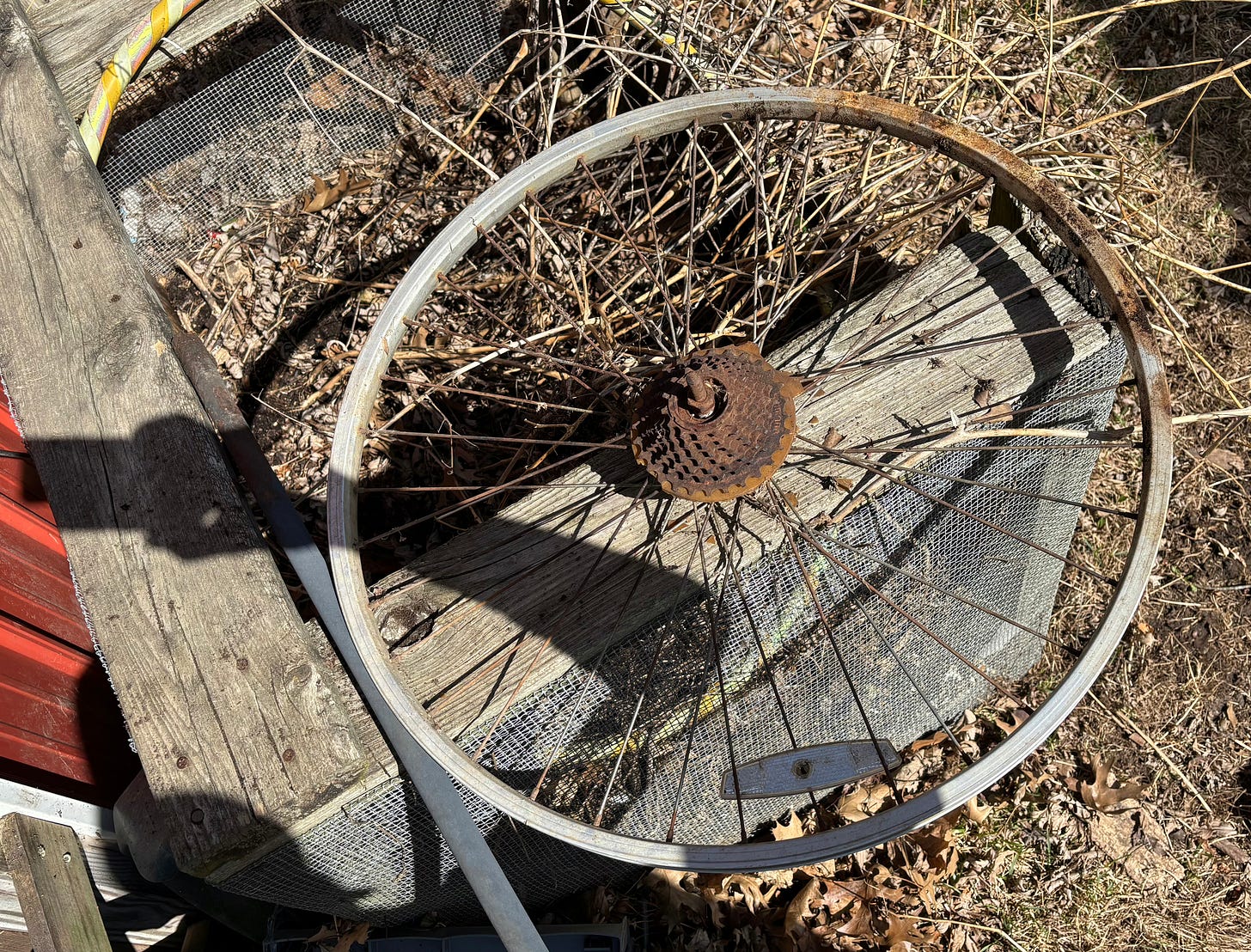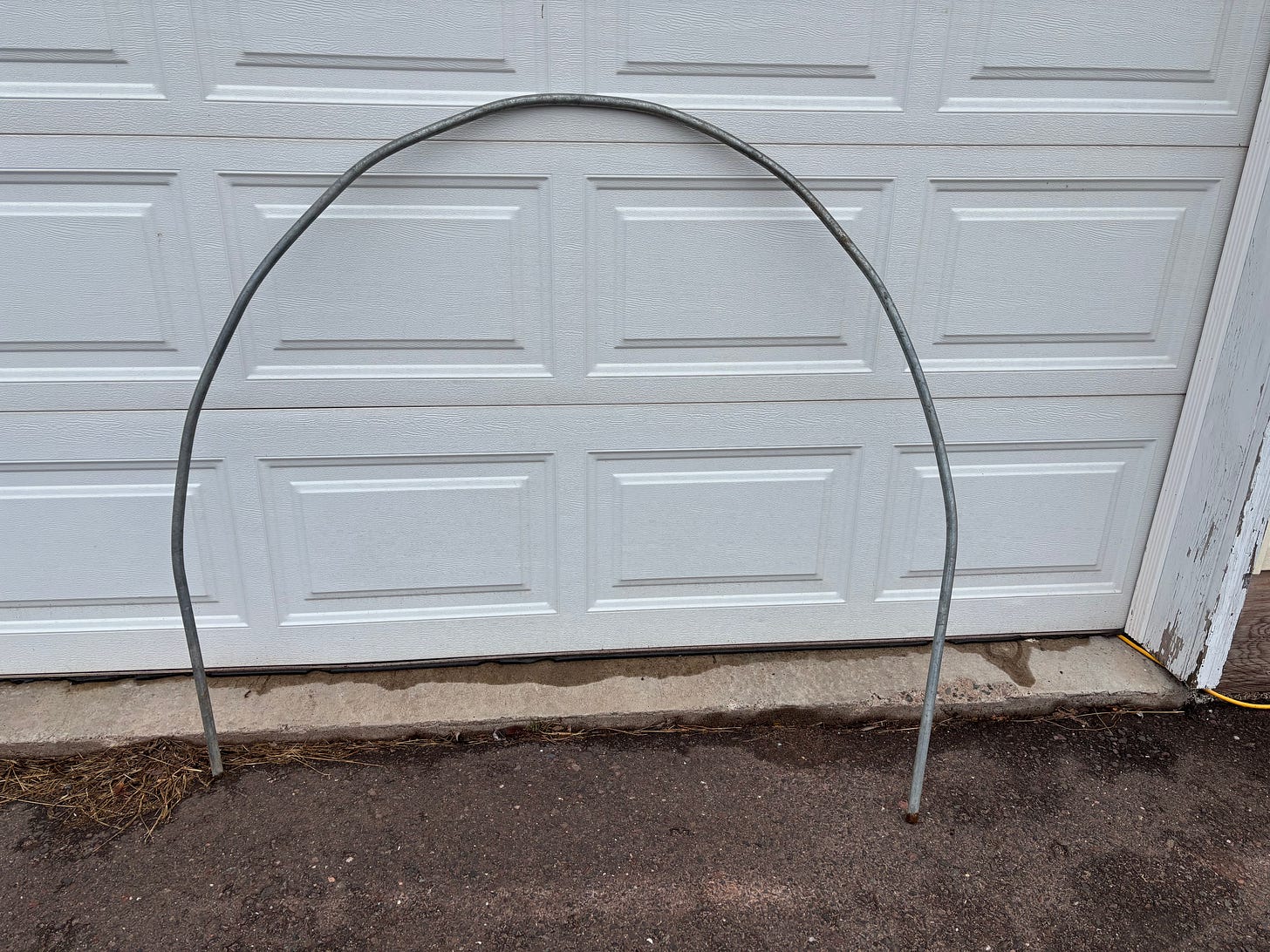In addition to hoop houses, also known as high tunnels, you can use low tunnels. The difference? High tunnels you can walk in, low tunnels you can’t. These are a simpler solution to the problem of creating a milder microclimate. I used them extensively before I had a high tunnel.
Low tunnels use a scaled-down version of the same construction techniques used in high tunnels. You can make hoops out of the electro-mechanical tubing (EMT) used in hoop houses, you can use heavy-gauge wire, or you can use PVC tubing. You can enclose with greenhouse plastic or non-woven floating row cover.

You can fashion a jig to bend the EMT or wire. To fit a low-tunnel over my 30” beds, I made a jig from a 27” bicycle wheel, the bike’s axle dropped into a hole in the wooden frame. The tubing was held against the wheel by the back of the frame. It was then bent over the wheel.
Plant the hoops in the ground and drape plastic or non-woven floating row covers over. Plastic for early season warming or cold, wind, and snow protection in the late season. It could also be used mid-season for really warm weather crops. The floating row cover gives a little bit of warming, but it’s used mostly for insect protection. I have also used it to keep snow off for easier harvest into the winter. Plastic can be hard to remove with heavy snow on it, but the row cover can just be torn to get at the crop.
In either case, you’ll have to find a way to fasten it down. Extra material on the sides can be held down by throwing soil on it, or I like to lay rebar on it for easier removal. You can also gather the material at the ends and tie to a stake.
Ventilation is less convenient than with the permanent structure of a hoop house. You can pull up the sides and clamp in place. It’s harder to open the ends with them being tied to a stake.
Low tunnels are cheap and easily moved to accommodate crop rotation. The downside is you have to disassemble the structure to access the crop. If all I’m doing is keeping snow off for winter harvest, the row cover is handy. Snow holds it down, and I tunnel my way in from the end, ripping it open as I go. I’ve done this a lot for kale.
Keep reading with a 7-day free trial
Subscribe to UnCowed to keep reading this post and get 7 days of free access to the full post archives.






